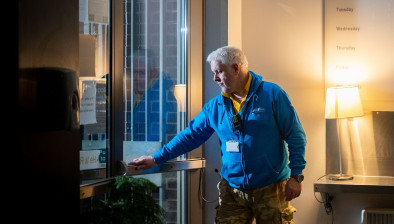Construction shortages threaten housebuilding target, industry warns

Ryan Gilluley
The Scottish Government’s housebuilding strategy is at risk of being derailed by chronic shortages of skills and labour, a senior construction industry expert has warned.
Ryan Gilluley, managing director of cost and claim consultants GCM Ltd, said several projects have already been hampered by supply chain disruption, leading to delays and increased costs.
While some problems are short-term and caused by disruption to global logistics following the Covid pandemic, others, particularly with the training and supply of skilled labour, are structural and long-term, Mr Gilluley warned.
Earlier this year the Scottish Government set out its first long-term housing strategy with ambitious plans to build 100,000 affordable homes over the next two decades.
The document, Housing to 2040, aims to ensure that everyone ‘will have a safe, high-quality home that is affordable and meets their needs in the place they want to be’ by the end of the next decade.
Mr Gilluley, whose Lanarkshire-based company provides a series of bespoke quantity surveying services for the building and engineering sectors, warned that many large development projects could grind to a halt because clients, developers and contractors can’t agree on a price or programme.
In the year to August, average material costs increased by more than 23%, according to the Department for Business, Energy, and Industrial Strategy (BEIS).
Supplies of steel and timber were particularly hard hit with imported sawn or planed wood up by 74% and fabricated stainless steel by 75%.
With the Scottish construction industry heavily reliant on materials imported from Europe and on migrant labour, Brexit has also had an impact, according to Mr Giluley.
While a trade deal agreed between the UK and the EU has eased some of the problems, the requirement for all goods imported from the continent to receive UK Conformity Assessed (UKCA) certification from January 1, 2022, threatens to generate an industry crisis.
There are only 45 testing facilities across the UK and none are currently qualified to certify certain specialised materials, including some types of glass and adhesives.
Mr Gilluley said: “Everyone in the process is doing their best to identify pinch-points in the supply of materials and labour and, where possible, to alleviate these pressures.
“But there are so many different factors at work that it’s difficult to predict where costs will be in several months’ time.”
“As a result, companies are now trying to procure their supply chain earlier in each project on a fixed price to transfer the material cost risk downstream to their suppliers.
“Everyone wants the organisation down the supply chain to assume the risk but fixing material prices beyond the next six months is incredibly difficult
“The cost of a recent school-building project increased by £5million between it being signed off and the first hole being dug, solely on account of increased labour and material costs.”
Scotland is also suffering from a shortage of skilled tradespeople, particularly bricklayers, joiners, plasterers, electricians, and plumbers, as well as hauliers needed to deliver materials to construction sites.
Mr Gilluley added: “Many migrants who returned to Europe following Brexit and at the start of the pandemic have not returned.
“Not only did they provide many of the skills needed for our industry to function effectively, but they were also employed in the construction supply chain
“As well as having a shortage of experienced, skilled tradesmen with more than five years’ experience, we don’t have enough young people coming through which means there is no solution in sight for this problem.”
“While some businesses have been agile enough to cope with the shortages, others have not and the long-term effects on the construction of commercial and residential properties could be devastating.
“The Scottish Government has set ambitious targets for building new homes but, without the necessary labour and dependable supply routes for materials, it’s difficult to see how it can be achieved.”







